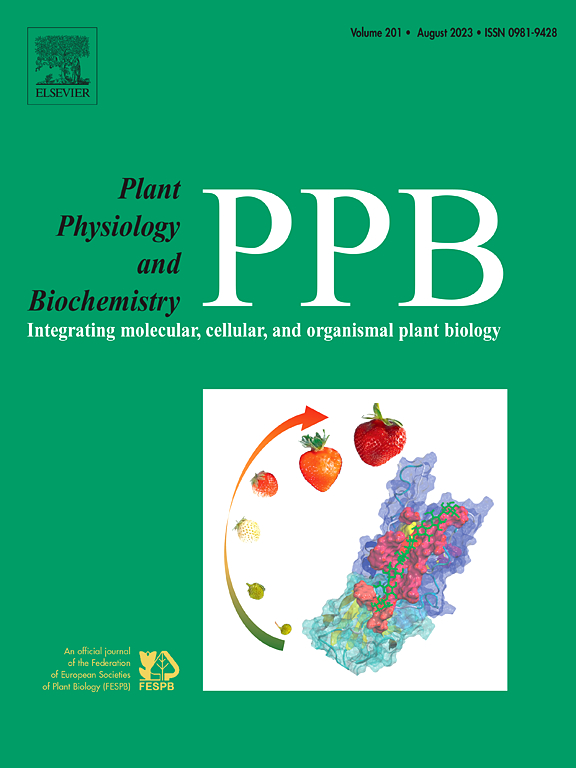Proteomic and physiological analyses reveal the mechanisms through which melatonin ameliorates heat stress-induced photoinhibition in Nicotiana tabacum
IF 6.1
2区 生物学
Q1 PLANT SCIENCES
引用次数: 0
Abstract
Raising temperature-induced heat stress under climate warming scenarios has become a predominant threat to crop growth and productivity. As a pleiotropic signaling molecule, melatonin offers an innovative solution for enhancing plant thermotolerance, although its mechanisms, particularly regarding leaf photosynthesis, remain insufficiently understood. This study employed proteomic and physiological analyses to reveal the potential benefits of endogenous melatonin in alleviating heat stress-induced damage to the photosynthetic performance of Nicotiana tabacum plants. Foliar application of melatonin at 50 μM effectively ameliorated heat stress induced-photoinhibition by preventing pigment degradation, enhancing Rubisco and FBPase activities, stimulating RuBP carboxylation and regeneration, and improving light energy transfer and utilization.The changes resulted in increased light-saturated photosynthesis rate and photochemical efficiency. Melatonin application also elevated starch and soluble sugar contents by stimulating photosynthetic carbon assimilation and suppressing dark respiration, thereby counteracting the harmful impact of heat stress. Proteomic analysis revealed that melatonin significantly upregulated the expression of two key enzymes (glutamyl-tRNA reductase and monomethyl ester aerobic oxidative cyclase) involved in the chlorophyll biosynthetic pathway, enhanced the expression of three proteins (PSII cytochrome b559, protein H, and 10 kDa polypeptide) related to the PSII photochemical reaction, stimulated the expression of fructose-1,6-bisphosphatase linked to the Calvin cycle, and increased the expression of granule-bound starch synthase related to carbohydrate metabolism, thereby positively mediating the photodamage induced by heat stress to plant photosynthetic performance. These results highlight the potential of endogenous melatonin application as an effective approach for boosting crop photosynthetic performance and thermotolerance to global warming.

求助全文
约1分钟内获得全文
求助全文
来源期刊
CiteScore
11.10
自引率
3.10%
发文量
410
审稿时长
33 days
期刊介绍:
Plant Physiology and Biochemistry publishes original theoretical, experimental and technical contributions in the various fields of plant physiology (biochemistry, physiology, structure, genetics, plant-microbe interactions, etc.) at diverse levels of integration (molecular, subcellular, cellular, organ, whole plant, environmental). Opinions expressed in the journal are the sole responsibility of the authors and publication does not imply the editors'' agreement.
Manuscripts describing molecular-genetic and/or gene expression data that are not integrated with biochemical analysis and/or actual measurements of plant physiological processes are not suitable for PPB. Also "Omics" studies (transcriptomics, proteomics, metabolomics, etc.) reporting descriptive analysis without an element of functional validation assays, will not be considered. Similarly, applied agronomic or phytochemical studies that generate no new, fundamental insights in plant physiological and/or biochemical processes are not suitable for publication in PPB.
Plant Physiology and Biochemistry publishes several types of articles: Reviews, Papers and Short Papers. Articles for Reviews are either invited by the editor or proposed by the authors for the editor''s prior agreement. Reviews should not exceed 40 typewritten pages and Short Papers no more than approximately 8 typewritten pages. The fundamental character of Plant Physiology and Biochemistry remains that of a journal for original results.

 求助内容:
求助内容: 应助结果提醒方式:
应助结果提醒方式:


